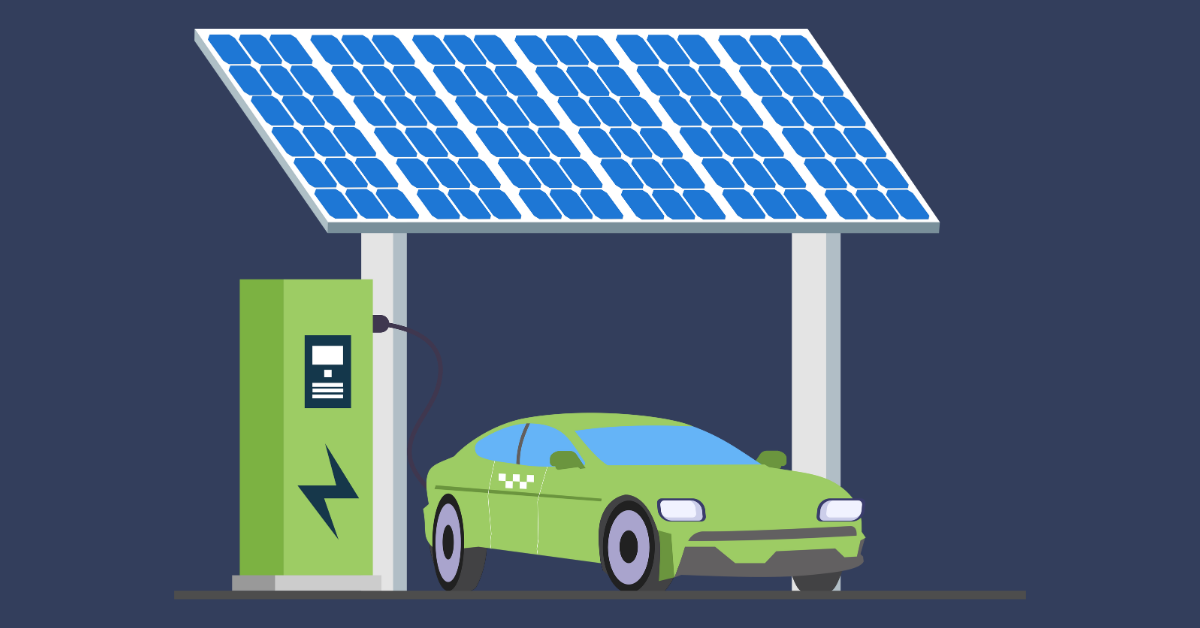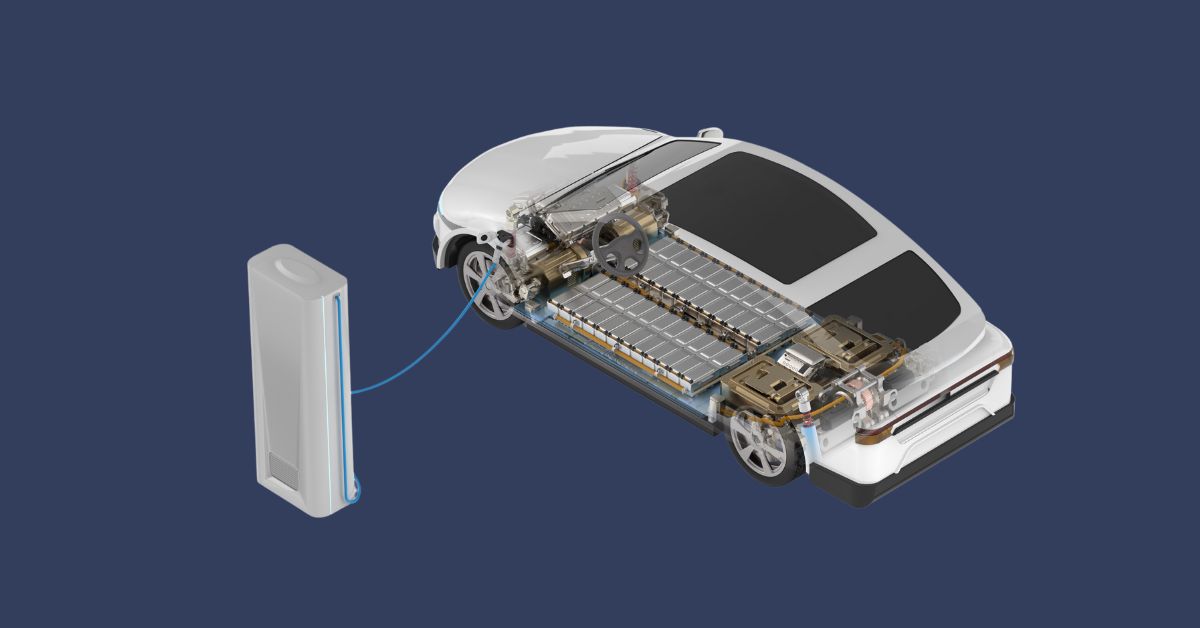Electric Vehicle Architecture
Electric Vehicle Architecture refers to the design and layout of an electric vehicle’s components, including the battery, electric motor, power electronics, and control systems. Unlike traditional internal combustion engine vehicles, EV architecture prioritizes efficient energy management and space utilization, often featuring a flat, skateboard-like platform to house the battery pack. This architecture enables better weight distribution, lower center of gravity, and increased interior space, all of which contribute to improved performance, safety, and driving experience.
Electric Vehicle Architecture: A Deep Dive into the Future of Mobility
Introduction
The automotive industry is undergoing a significant transformation as the world shifts towards sustainable transportation. At the forefront of this revolution are electric vehicles (EVs), which have gained substantial momentum in recent years. The architecture of an electric vehicle is fundamentally different from that of traditional internal combustion engine (ICE) vehicles. This difference is not just in the powertrain but also in the overall design, components, and manufacturing processes. In this blog post, we will explore the architecture of electric vehicles in detail, covering various aspects such as the electric powertrain, battery systems, vehicle dynamics, charging infrastructure, and the future trends shaping the evolution of EV architecture.
The Basics of Electric Vehicle Architecture
Electric vehicle (EV) architecture refers to the design and integration of various components and systems that enable the operation of an electric vehicle. The architecture is distinct from traditional internal combustion engine vehicles (ICEVs) due to the use of electric power as the primary energy source. Here’s an overview of the basics:
1. Battery Pack
- Function: The battery pack is the heart of the EV, storing electrical energy that powers the vehicle.
- Types: Common types include lithium-ion, lithium-polymer, and solid-state batteries.
- Capacity: Measured in kilowatt-hours (kWh), the battery’s capacity determines the range of the vehicle.
2. Electric Motor
- Function: Converts electrical energy from the battery into mechanical energy to drive the wheels.
- Types: Induction motors, permanent magnet synchronous motors (PMSM), and brushless DC motors are common in EVs.
- Efficiency: Electric motors are typically more efficient than internal combustion engines, with efficiencies of around 85-95%.
3. Power Electronics
- Inverter: Converts the direct current (DC) from the battery into alternating current (AC) for the motor, and vice versa during regenerative braking.
- Controller: Manages the power flow between the battery, motor, and other systems, ensuring efficient operation and control of the vehicle’s speed and torque.
4. Charging System
- On-Board Charger (OBC): Converts AC from the charging station to DC to charge the battery.
- Charging Ports: Connect the vehicle to external power sources for recharging. Common standards include Type 1 (J1772), Type 2 (Mennekes), and CCS (Combined Charging System).
5. Thermal Management System
- Function: Maintains optimal operating temperatures for the battery, motor, and power electronics to ensure efficiency and longevity.
- Cooling Methods: Air cooling, liquid cooling, and refrigerant-based systems are commonly used.
6. Transmission (Gearbox)
- Function: Transfers power from the motor to the wheels. EVs often use single-speed transmissions, as electric motors provide consistent torque across a wide range of speeds.
- Differentials: Distribute power to the wheels, especially in all-wheel-drive (AWD) configurations.
7. Regenerative Braking
- Function: Captures kinetic energy during braking and converts it into electrical energy, which is then stored in the battery.
- Benefits: Improves energy efficiency and extends the vehicle’s range.
8. Vehicle Control Unit (VCU)
- Function: Acts as the brain of the EV, integrating all systems and managing vehicle dynamics, energy usage, and safety functions.
- Communication: Uses various protocols like CAN bus to communicate between components.
9. Auxiliary Systems
- 12V Battery: Powers traditional vehicle systems like lighting, infotainment, and HVAC (Heating, Ventilation, and Air Conditioning).
- Heating and Cooling: Special considerations are made for heating in cold climates since EVs lack the waste heat generated by internal combustion engines.
10. Chassis and Body
- Design Considerations: The architecture is often optimized for weight distribution, aerodynamics, and safety, with considerations for the placement of the heavy battery pack.
11. Connectivity and Software
- Telematics: Provides real-time data on battery health, location, and other parameters.
- Over-the-Air Updates: Allows manufacturers to update vehicle software remotely, improving performance and adding new features.
The Evolution of Electric Vehicle Architecture
Electric vehicles are not a new concept; they have been around for over a century. However, it is only in recent decades that advancements in battery technology, coupled with growing environmental concerns, have pushed EVs into the mainstream. The early electric vehicles were simple, with limited range and performance. They relied on lead-acid batteries and were often seen as novelties rather than practical transportation solutions.

The architecture of these early electric vehicles was rudimentary, with the electric motor and battery system being the only significant differences from ICE vehicles. As technology advanced, so did the architecture of EVs. Modern electric vehicles feature highly sophisticated systems designed to maximize efficiency, range, and performance. This evolution has led to the development of new components and systems that are unique to electric vehicles.
Key Components of Electric Vehicle Architecture
The architecture of an electric vehicle is composed of several key components that work together to provide a seamless driving experience. These components include the electric powertrain, battery system, thermal management system, power electronics, and the vehicle’s chassis and body structure.
1. Electric Powertrain
The electric powertrain is the heart of an EV and is responsible for converting electrical energy into mechanical energy to drive the vehicle. Unlike ICE vehicles, which use a complex system of gears, transmissions, and differentials, electric vehicles use a much simpler powertrain architecture.
- Electric Motor: The electric motor is responsible for driving the wheels of the vehicle. There are different types of electric motors used in EVs, including induction motors, permanent magnet synchronous motors (PMSM), and switched reluctance motors (SRM). Each type has its advantages and is chosen based on the specific requirements of the vehicle.
- Power Inverter: The power inverter converts the direct current (DC) from the battery into alternating current (AC) to drive the electric motor. It also controls the speed and torque of the motor by adjusting the frequency and amplitude of the AC signal.
- Transmission: Unlike ICE vehicles, electric vehicles often use a single-speed transmission. This is because electric motors can deliver high torque at low speeds, eliminating the need for a multi-speed gearbox. Some high-performance EVs, however, may use a two-speed transmission to optimize efficiency and performance at different speeds.
- Regenerative Braking System: One of the unique features of electric vehicles is regenerative braking. This system allows the electric motor to act as a generator when the vehicle is decelerating, converting kinetic energy back into electrical energy and storing it in the battery. This process not only extends the vehicle’s range but also reduces wear on the braking system.
2. Battery System
The battery system is the most critical component of an electric vehicle, as it determines the range, performance, and overall efficiency of the vehicle. The battery system in an EV consists of several key components:

- Battery Pack: The battery pack is a collection of individual battery cells that are connected in series and parallel to achieve the desired voltage and capacity. Lithium-ion batteries are the most commonly used in modern electric vehicles due to their high energy density, long cycle life, and relatively low cost. The design and layout of the battery pack are crucial for optimizing space, weight distribution, and thermal management.
- Battery Management System (BMS): The BMS is responsible for monitoring and managing the performance of the battery pack. It ensures that the battery operates within safe limits, monitors the state of charge (SOC) and state of health (SOH), and balances the charge across individual cells. The BMS also plays a crucial role in protecting the battery from overcharging, deep discharging, and thermal runaway.
- Thermal Management System: The thermal management system is essential for maintaining the battery pack within its optimal temperature range. Lithium-ion batteries are sensitive to temperature fluctuations, and excessive heat can lead to degradation and reduced performance. The thermal management system may include liquid cooling, air cooling, or a combination of both, depending on the design of the vehicle.
- Charging System: The charging system is responsible for replenishing the energy in the battery pack. It includes the onboard charger, which converts AC power from the grid into DC power for the battery, and the charging port, which allows the vehicle to connect to external charging infrastructure. The charging system also interfaces with the BMS to ensure safe and efficient charging.
3. Power Electronics
Power electronics play a vital role in the architecture of electric vehicles, as they control the flow of electrical energy between the battery, motor, and other systems. The main components of the power electronics system include:
- DC-DC Converter: The DC-DC converter steps down the high-voltage DC from the battery pack to a lower voltage required by the vehicle’s auxiliary systems, such as lighting, infotainment, and HVAC.
- Motor Controller: The motor controller regulates the operation of the electric motor, controlling its speed, torque, and direction. It receives inputs from the driver (accelerator and brake pedals) and the BMS to optimize the motor’s performance.
- Inverter: As mentioned earlier, the inverter converts DC power from the battery into AC power for the electric motor. It also plays a crucial role in regenerative braking by converting AC power generated by the motor back into DC power for the battery.
4. Vehicle Dynamics and Chassis
The architecture of an electric vehicle is not limited to the powertrain and battery system; it also includes the design of the chassis, suspension, and overall vehicle dynamics. Electric vehicles often feature a unique chassis design to accommodate the battery pack, which is typically located on the floor of the vehicle.
- Low Center of Gravity: Placing the battery pack in the floor of the vehicle lowers the center of gravity, improving stability and handling. This design also allows for better weight distribution between the front and rear axles.
- Increased Interior Space: The compact nature of the electric powertrain allows for more flexible packaging, resulting in increased interior space for passengers and cargo. Many EVs feature a flat floor design, which further enhances the spaciousness of the cabin.
- Improved Aerodynamics: Electric vehicles are designed with aerodynamics in mind to reduce drag and improve efficiency. This often results in sleek, streamlined body designs with features such as active grille shutters, flush door handles, and underbody panels.
- Suspension System: The suspension system of an electric vehicle is tuned to accommodate the additional weight of the battery pack while maintaining ride comfort and handling performance. Some EVs also feature adaptive suspension systems that can adjust damping based on driving conditions.
5. Charging Infrastructure
The charging infrastructure is an essential component of the electric vehicle ecosystem. It includes a network of charging stations, connectors, and communication protocols that enable EVs to recharge their batteries. The charging infrastructure is divided into three main categories:
- Level 1 Charging: Level 1 charging uses a standard household outlet (120V AC) and provides the slowest charging rate. It is suitable for overnight charging and is typically used with portable chargers that come with the vehicle.
- Level 2 Charging: Level 2 charging uses a dedicated charging station (240V AC) and provides a faster charging rate than Level 1. It is commonly used in homes, workplaces, and public charging stations. Level 2 chargers can replenish an EV’s battery in a few hours, depending on the battery capacity.
- DC Fast Charging: DC fast charging (Level 3) provides the fastest charging rate by delivering high-voltage DC power directly to the battery. DC fast chargers are typically found at public charging stations along highways and in urban areas. They can charge an EV to 80% in as little as 30 minutes, making them ideal for long-distance travel.
The development of charging infrastructure is critical to the widespread adoption of electric vehicles. Governments, utility companies, and private enterprises are investing heavily in expanding the charging network to make EV ownership more convenient and accessible.
Future Trends in Electric Vehicle Architecture
As the electric vehicle industry continues to evolve, several emerging trends are shaping the future of EV architecture. These trends are driven by advancements in technology, changing consumer preferences, and the need to address environmental challenges. Some of the key trends include:

1. Solid-State Batteries
One of the most significant developments in EV architecture is the potential shift from lithium-ion batteries to solid-state batteries. Solid-state batteries use a solid electrolyte instead of a liquid one, offering several advantages, including higher energy density, faster charging times, and improved safety. These batteries have the potential to revolutionize EV architecture by enabling longer ranges, lighter battery packs, and more compact designs. Several automakers and battery manufacturers are actively researching and developing solid-state batteries, with commercialization expected in the coming years.
2. Wireless Charging
Wireless charging technology is gaining traction as a convenient and efficient way to charge electric vehicles. Unlike traditional plug-in charging, wireless charging uses electromagnetic fields to transfer energy between a charging pad on the ground and a receiver on the vehicle. This technology eliminates the need for physical connectors and cables, making charging more seamless.
Frequently Asked Questions: Electric Vehicle Architecture
1. What is the basic architecture of an electric vehicle?
The basic architecture of an electric vehicle includes components such as the electric motor, battery pack, power electronics controller, transmission (if present), onboard charger, thermal management system, and vehicle control unit.
2. How does an electric motor work in an EV?
An electric motor in an EV converts electrical energy from the battery into mechanical energy to drive the wheels. It operates based on electromagnetic principles, where the flow of electricity creates a magnetic field that rotates the motor shaft.
3. What types of electric motors are used in EVs?
Common types of electric motors used in EVs include Permanent Magnet Synchronous Motors (PMSM), Induction Motors, and Brushless DC Motors. Each type has its advantages in terms of efficiency, cost, and performance.
4. How is the battery pack structured in an electric vehicle?
The battery pack in an EV is typically composed of multiple cells arranged in series and parallel configurations to achieve the desired voltage and capacity. These cells are grouped into modules, and several modules make up the entire battery pack.
5. What is a Battery Management System (BMS), and why is it important?
The Battery Management System (BMS) monitors and manages the battery pack’s state of charge, health, and temperature. It ensures the safe operation of the battery, preventing overcharging, deep discharging, and thermal runaway.
6. What is the role of power electronics in an EV?
Power electronics in an EV manage the flow of electrical energy between the battery, motor, and other components. Key devices include inverters, which convert DC from the battery to AC for the motor, and DC-DC converters, which step down voltage for auxiliary systems.
7. How does thermal management work in EVs?
Thermal management in EVs involves regulating the temperature of the battery pack, motor, and power electronics to ensure optimal performance and longevity. This is typically achieved through liquid cooling, air cooling, or a combination of both.
8. What is regenerative braking and how does it work in an EV?
Regenerative braking is a feature in EVs that allows the vehicle to recover kinetic energy during braking. The electric motor acts as a generator during braking, converting kinetic energy back into electrical energy, which is stored in the battery.
9. How do onboard chargers function in electric vehicles?
Onboard chargers convert AC electricity from an external source (like a wall outlet or charging station) into DC electricity to charge the battery pack. The charging speed depends on the charger’s power rating and the vehicle’s battery capacity.
10. How does the control system of an EV work?
The control system in an EV integrates various subsystems like the motor, battery, power electronics, and thermal management. It ensures they work together efficiently by managing power distribution, monitoring vehicle performance, and ensuring safety.
11. What is the difference between a single-motor and a dual-motor EV architecture?
A single-motor EV has one electric motor that drives either the front or rear wheels. A dual-motor EV has two motors, one for each axle, allowing for all-wheel drive and better performance, especially in terms of acceleration and traction.
12. Can an EV’s architecture affect its range?
Yes, the architecture of an EV, including motor efficiency, battery capacity, weight distribution, and aerodynamics, significantly impacts its range. Efficient design and lightweight materials can extend the vehicle’s range.
13. What advancements are being made in EV architecture?
Advancements in EV architecture include the development of solid-state batteries, more efficient motors, integrated power electronics, and improved thermal management systems, all aimed at increasing range, reducing costs, and enhancing overall vehicle performance.
Click Here to Know More About Electric Vehicle Architecture
Click Here to Know More About Electric Vehicle Advantages and Disadvantages
